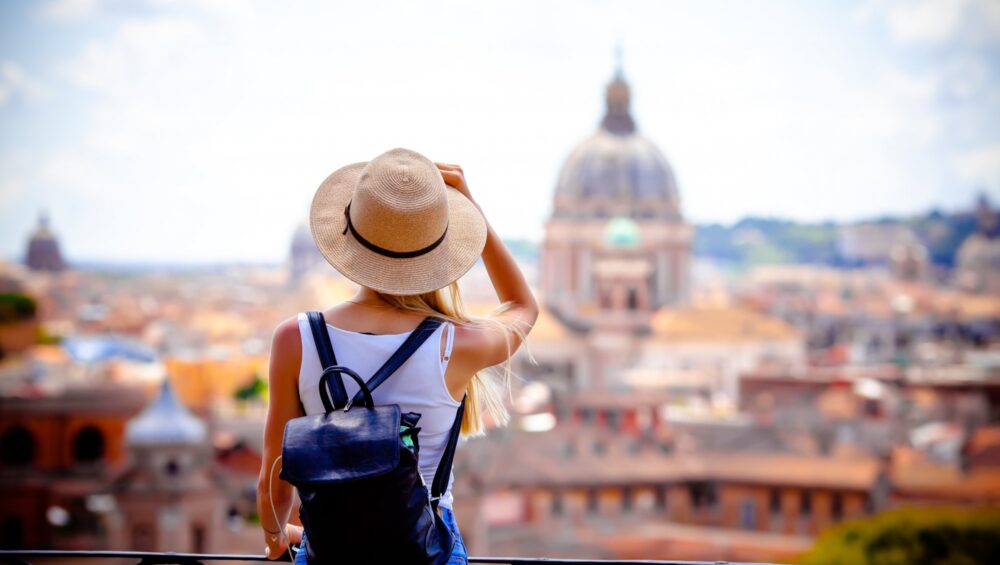Rome, the eternal city, is a must-visit destination for anyone who loves history, art, and culture. With so much to see and do, it can be overwhelming to plan a trip to Rome, especially if you only have four days. But don’t worry, we’ve got you covered with this guide on what to see and do in Rome in just four days.
Day 1: Ancient Rome
Start your trip by exploring the ancient history of Rome. Head to the Colosseum, one of the most iconic landmarks in Rome, and marvel at the impressive architecture of this ancient amphitheater. Next, visit the nearby Roman Forum, the heart of political and social life in ancient Rome. Finally, end your day at the Pantheon, a remarkable piece of ancient architecture that has been standing since the 2nd century AD.
Colosseum
The Colosseum is the largest amphitheater ever built and is a symbol of ancient Rome. You can take a guided tour or explore on your own. Be sure to visit the underground chambers where gladiators and animals were kept before their fights.
Roman Forum
The Roman Forum was the center of political and social life in ancient Rome. You can explore the ruins of ancient temples, basilicas, and public buildings. Don’t miss the Temple of Julius Caesar, where the Roman dictator was cremated after his assassination.
Pantheon
The Pantheon is one of the best-preserved ancient buildings in Rome. It was originally built as a temple to all the gods of Rome and has been used as a church since the 7th century. The dome of the Pantheon is a masterpiece of engineering, and the interior is adorned with beautiful marble and mosaics.
Day 2: Vatican City
On your second day, head to Vatican City, the smallest country in the world and home to some of the most famous art and architecture in the world. Start your day at St. Peter’s Basilica, the largest church in the world, and then head to the Vatican Museums, home to the Sistine Chapel.
St. Peter’s Basilica
St. Peter’s Basilica is the most famous church in the world and is the center of the Catholic Church. The church is home to some of the most famous art and architecture in the world, including Michelangelo’s Pieta and Bernini’s Baldacchino.
Vatican Museums
The Vatican Museums are home to some of the most famous art in the world, including the Sistine Chapel and the Raphael Rooms. The Sistine Chapel is famous for its ceiling painted by Michelangelo, which depicts scenes from the Bible.
Day 3: Baroque Rome
On your third day, explore the Baroque era of Rome. Start your day at the Spanish Steps, one of the most famous landmarks in Rome, and then head to the Trevi Fountain, one of the most beautiful fountains in the world. Finally, end your day at the Piazza Navona, a beautiful square with three fountains and a beautiful church.
Spanish Steps
The Spanish Steps are a beautiful staircase that connects the Piazza di Spagna with the Piazza Trinita dei Monti. The staircase is a popular spot for tourists and locals alike and offers great views of the city.
Trevi Fountain
The Trevi Fountain is one of the most beautiful fountains in the world and is famous for its role in the film “La Dolce Vita.” Be sure to throw a coin over your shoulder into the fountain to ensure your return to Rome.
Piazza Navona
The Piazza Navona is a beautiful square with three fountains and a beautiful church. The square is lined with restaurants and cafes and is a great place to relax and people watch.
Day 4: Trastevere
On your final day, explore the charming neighborhood of Trastevere. Start your day by exploring the narrow streets and hidden corners of this picturesque neighborhood, and then head to the Gianicolo Hill for panoramic views of the city. Finally, end your day at the Campo de’ Fiori, a lively square with a bustling market.
Trastevere
Trastevere is a charming neighborhood with narrow streets, colorful buildings, and lively piazzas. You can explore the neighborhood on foot and discover hidden gems around every corner.
Gianicolo Hill
The Gianicolo Hill is a beautiful park with panoramic views of the city. You can hike to the top of the hill or take a bus to enjoy the views.
Campo de’ Fiori
The Campo de’ Fiori is a lively square with a bustling market and a statue of Giordano Bruno, an Italian philosopher who was burned at the stake for heresy in the 16th century. The square is a great place to shop for souvenirs or grab a bite to eat.
In conclusion, Rome has so much to offer that four days is not enough to explore everything. But with this guide, you can make the most of your time in Rome and experience the best of ancient history, art, and culture. Buon viaggio!



